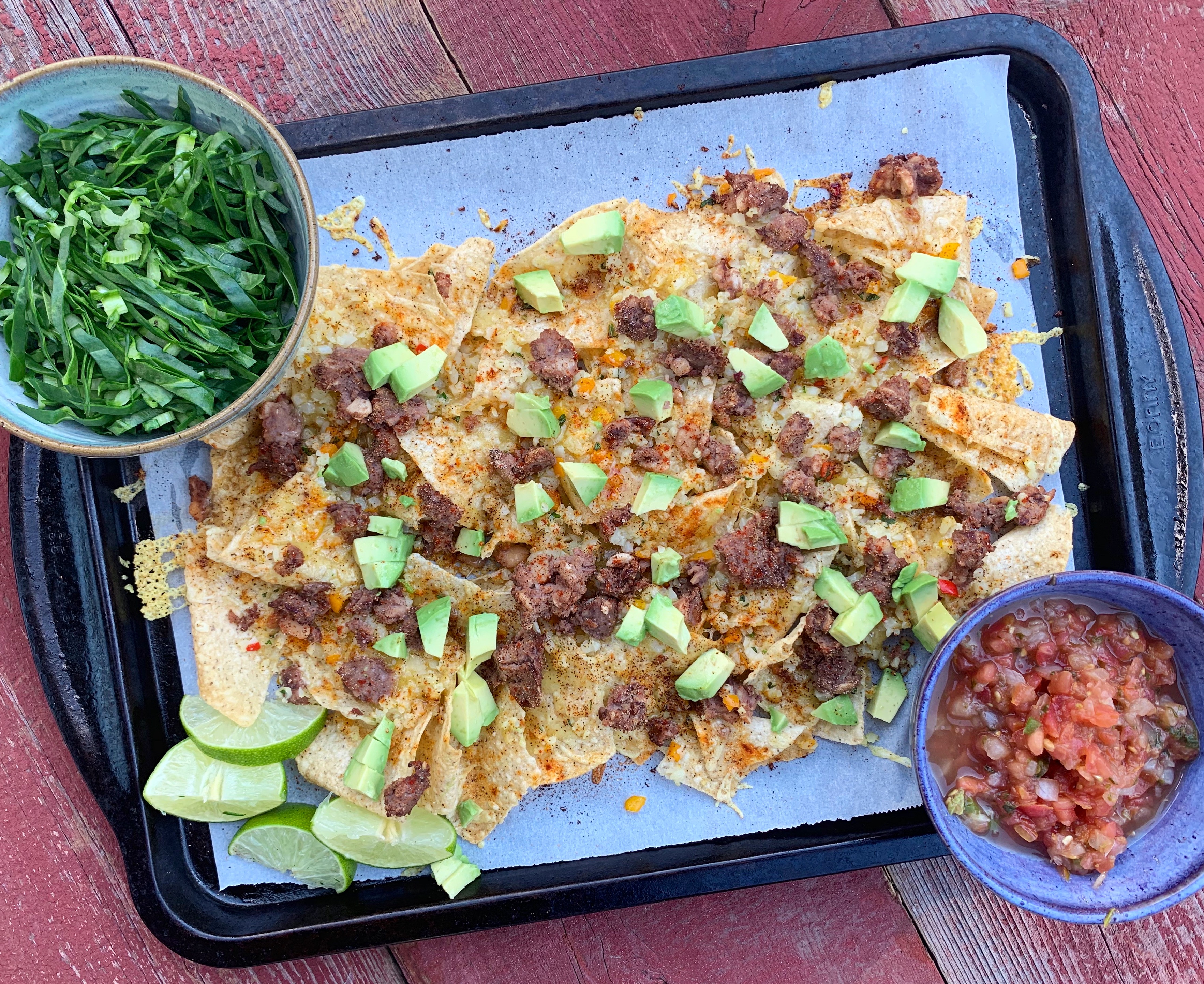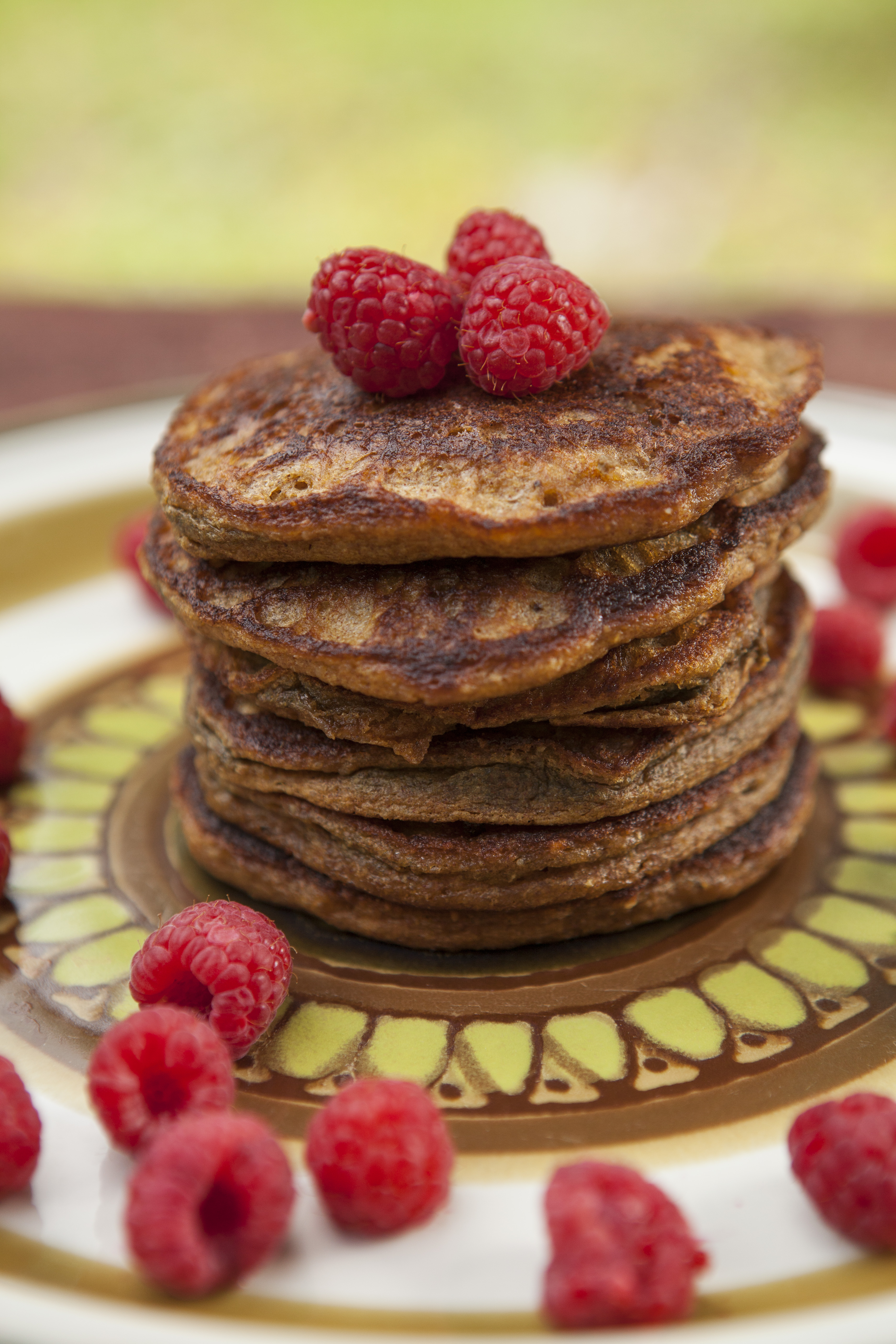
My daughter with CF struggled with weight gain for the first two years of her life. She’s pancreas sufficient yet seemed to teeter around the 5th – 10th percentile for her height to weight ratio for much of her infancy and toddlerhood. How much of the inadequacy resulted from CF and how much from genetic predisposition? Like most CF families, we’ll never know. Regardless, we were given ample advice on how to bulk up her calories in order to promote better weight gain.
What I learned from this experience was that some approaches to weight gain focus solely on caloric intake and fail to recognize the nutritional value (or lack thereof) of certain foods. I chose to offer calorically and nutritionally dense foods to my daughter in order to support healthy eating habits and encourage a diverse palate. I invite you to read an earlier post, Cultivating Healthy Eating Habits in Our Children if you’re a parent looking for specific feeding strategies.

Before I talk about adding calories, I want to talk about adding vegetables and other whole food ingredients to your diet. Vegetables (and fruits) are certainly not the highest source of calories, but they contain necessary vitamins, minerals, fiber, and phytonutrients to support a healthy body. In general, the western dieter isn’t consuming adequate health-promoting foods, especially fruits, vegetables, and other whole food ingredients. Eating for calories alone can result in accidentally missing out on these nutrient-dense additions. I therefore approach meals in a way that first assesses nutritional value – vitamins, minerals, antioxidants, and macronutrients (proteins, fats, and carbohydrates) – and then start to add in the calories where I can.
Alright, so how do I approach calories? First off, starchy vegetables like sweet potatoes, potatoes, winter squash, and even plantains (these are a fruit, but they have to be cooked and I therefore associate them with starchy vegetables) are actually quite dense when it comes to nutrients and calories. I see a lot of focus on high fat foods for people with CF, which is certainly important, but don’t discard the value in healthy, carb-packed vegetables. Sweet potatoes are one of my family’s favorites and can be diced and sautéed or baked in coconut oil or olive oil, or even fried in lard to make crispy sweet potato fries (yes, I use lard from pastured animals; I’ll discuss why momentarily). Winter squash can be baked whole and then blended with bone broth and full fat coconut milk or coconut cream to make naturally sweet and creamy soups. Baked sweet potatoes can be mashed with butter or coconut oil, cinnamon, and salt for an easy side to accompany most any protein. Potato salads made from potatoes, celery, red pepper, cucumber, and dill can be drowned in a healthy mayonnaise (more on that momentarily) and prove to be extremely nutrient and calorie dense. I should also note that these carb-rich vegetables and fruits may not be suitable for those with CFRD. For these individuals, a diet with far fewer carbs and more fat is likely more beneficial.
I also bulk up our meals with calories by cooking with lots of healthy oils and fats. As I already mentioned, we eat a lot of vegetables, but steaming is not one of my preferred preparation methods. If you do steam your vegetables, plan to top them with a calorically dense dressing or sauce. I instead choose to use a healthy serving of olive oil and sauté our vegetables or add them to other dishes like frittatas made from kale, garlic, fresh basil, tomatoes, and bacon which results in a dish that’s nutritionally dense and full of flavor and calories.
I use a good amount of mayonnaise made form avocado oil that I find at Costco. I’m sure you can find it from other sources as well, but this is by far the cheapest option that I’ve found. My daughter has a slight mayonnaise obsession (okay, so do I), so I use it in tuna salad (add some minced veggies in there, too!), chicken salad (more veggies!), on baked or fried fish, for dipping hotdogs, or for making salad dressings from olive oil and other healthy ingredients. You can also make your own mayonnaise fairly easily, which gives you more control over the quality of the product that you’re consuming.
Coconut milk is another excellent source of nutrient dense calories. I cook rice using chicken stock and a can of full fat coconut milk to replace some of the liquid. Add in some turmeric, cumin, cardamom, and salt, and you have a delicious and high-calorie side to accompany most any protein and/or vegetable.
Salads, while naturally low in calories, can be easily bulked up using hardboiled (or fried) eggs, olives, avocado or guacamole, bacon, mayonnaise, crumbled or grated cheese, nuts, seeds, and homemade olive oil vinaigrettes. I choose to make vinaigrettes using a 1:1 vinegar to oil ratio, but you can adjust the amount of oil if you’re needing more calories. Serving a side of roasted or sautéed butternut squash or sweet potatoes (use a heavy amount of cooking oil) can make for a complete, well-rounded meal. When compiled together, these salad toppings – eggs, olives, avocados, bacon, nuts, seeds, and cheese – can make a great toddler or kid meal. I often pack lunches made from a selection of these calorie-dense foods along with some sliced cucumbers, red peppers, hummus, apples, or whatever other fruits and vegetables I have on hand. Mixing a bit of olive oil into your hummus or serving the apple slices topped with peanut butter can help to further increase calories without adding too much bulk.
My last suggestion for bulking up calories is in regard to flour products. My family doesn’t eat wheat due to my son’s severe allergy, but I still create a variety of delicious breads and bread-like products from ingredients that are both nutritionally and calorically dense. Below, I’ve shared the Plantain Blender Pancake recipe from my cookbook, The Grain-Free, Sugar-Free, Dairy-Free Family Cookbook, but hopefully you see that these pancakes are calorically dense, yet also full of whole food nutrition. This is a nut-free recipe but preparing breads and bread-like products using almond or coconut flour are other good options for those who can tolerate nuts and coconut. These flours don’t perform like wheat flour, so you’ll need to find a recipe specific for their use, otherwise you’ll be extremely disappointed in the result. Personally, I find coconut flour to be a bit difficult to use – it’s not at all similar to wheat and requires a lot of eggs to hold it together, but I’ve found that it works well in certain instances. Almond flour is more forgiving, produces less variability when it comes to quality, and may therefore be a better starting point when it comes to trying alternative flours.
Hopefully you see that there are a number of whole food ingredients that are high in calories and nutritional value. Changing your family’s diet can feel challenging, but it’s possible. Keep in mind that you don’t have to make dramatic changes all at once; slow, small, and sustainable changes overtime can be substantial and result in tremendous benefits over a lifetime. Besides, what do you have to lose? More importantly, what do you have to gain?
Food Photo Descriptions (from top to bottom):
1. Grain-free nachos made from grain-free tortilla chips smothered in cheese, cauliflower rice, ground sausage, refried beans, and avocado served with shredded romaine and a homemade pico de gallo.
2. Chicken tenders coated in coconut flakes and almond flour. These were baked, but they could be fried to increase calories.
3. Oatmeal made from oats, cauliflower rice, grated carrots, coconut milk, cinnamon, vanilla, bananas, and walnuts.

Ingredients:
½ cup (75 g) raw sunflower seeds
2 teaspoons cinnamon
1 teaspoon baking powder
½ teaspoon baking soda
¼ teaspoon salt
2 ripe plantains, peeled and sliced in 2-inch (5 cm) pieces
2 eggs
¼ cup (60 ml) water
1/3 cup (65 g) coconut oil, for cooking, divided
Instructions:
1. Grind the sunflower seeds into a flour in a high-powered blender or food processor. Do not overblend or the seeds will start to turn into a seed butter. Scrape down the sides and corners after blending to free any lodged flour.
2. Add the remaining ingredients, except the coconut oil, to the blender or food processor in the order listed and blend just long enough to form a smooth batter.
3. Heat a large frying pan over medium-low heat and add approximately 2 tablespoons of the coconut oil to the pan. Using a ¼-cup (80 ml) measuring cup, pour batter into the pan to form pancakes. You can usually cook four pancakes at a time, but this depends on the size of your pan.
4. Cook each pancake for approximately 3 minutes or until the edges being to brown, flip, and cook for an additional 2-3 minutes.
5. Continue cooking pancakes, being sure to add 1-2 tablespoons of coconut oil before each consecutive batch to prevent sticking.
6. Serve pancakes with fresh fruit, almond butter, or simply by themselves.

Leah lives in the mountains of North Carolina with her husband, T. C., and her two children, Owen and June. Owen has a life-threatening anaphylactic allergy to wheat, and June has cystic fibrosis. Leah’s commitment to a nutrient-dense diet has played an important role in her children’s integrative care. Her book, The Grain-Free, Sugar-Free, Dairy-Free Family Cookbook is a complete guide for families interested in learning how to efficiently cook more made-from-scratch meals. Leah obtained her health coach certification from the Institute for Integrative Nutrition after earning a Bachelor of Science degree in Environmental Biology and a Master of Public Health degree in Environmental Health Sciences. She has worked in nutrition and gardening education since 2009 with a focus on engaging children in healthy eating habits through experiential learning and discovery. Leah started and runs the Deep Rooted Wellness blog, on which she posts stories and tips regarding nutrition, gardening, and healthy families.
Help Others Live STRONGER and LONGER-
***Views expressed in the CFLF Blog are those of the bloggers themselves and not necessarily of the Cystic Fibrosis Lifestyle Foundation***
***Please speak with your physician before making any changes to your CF management***
Add new comment